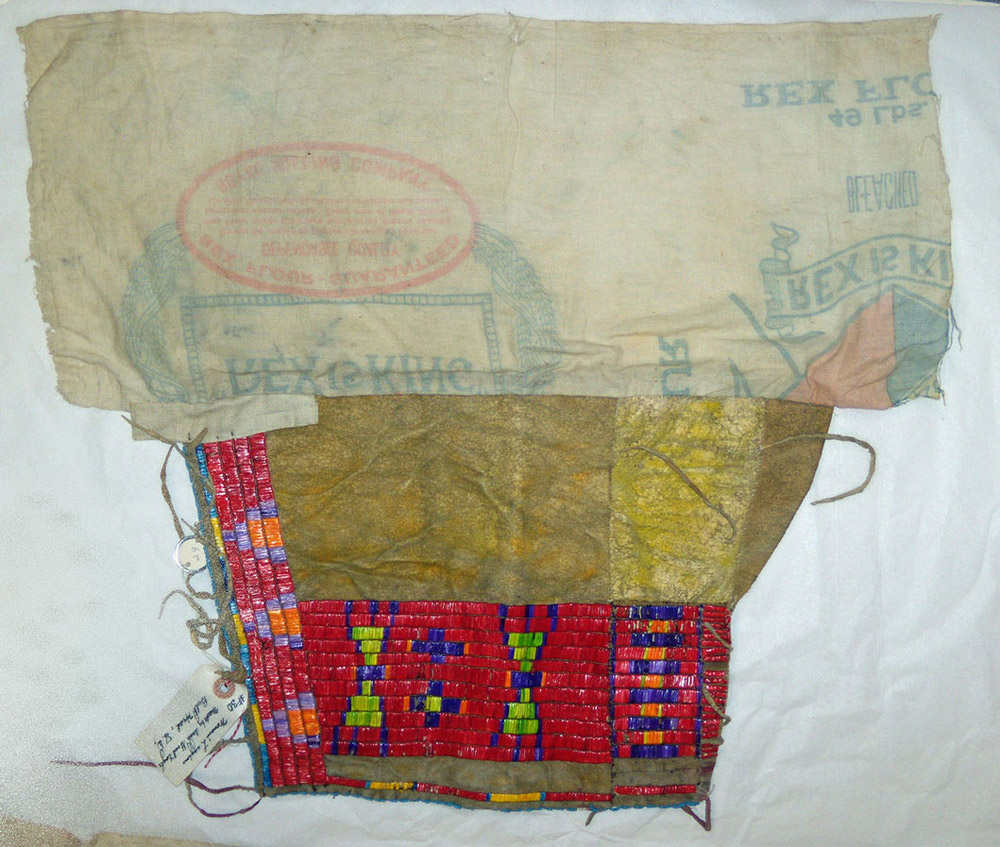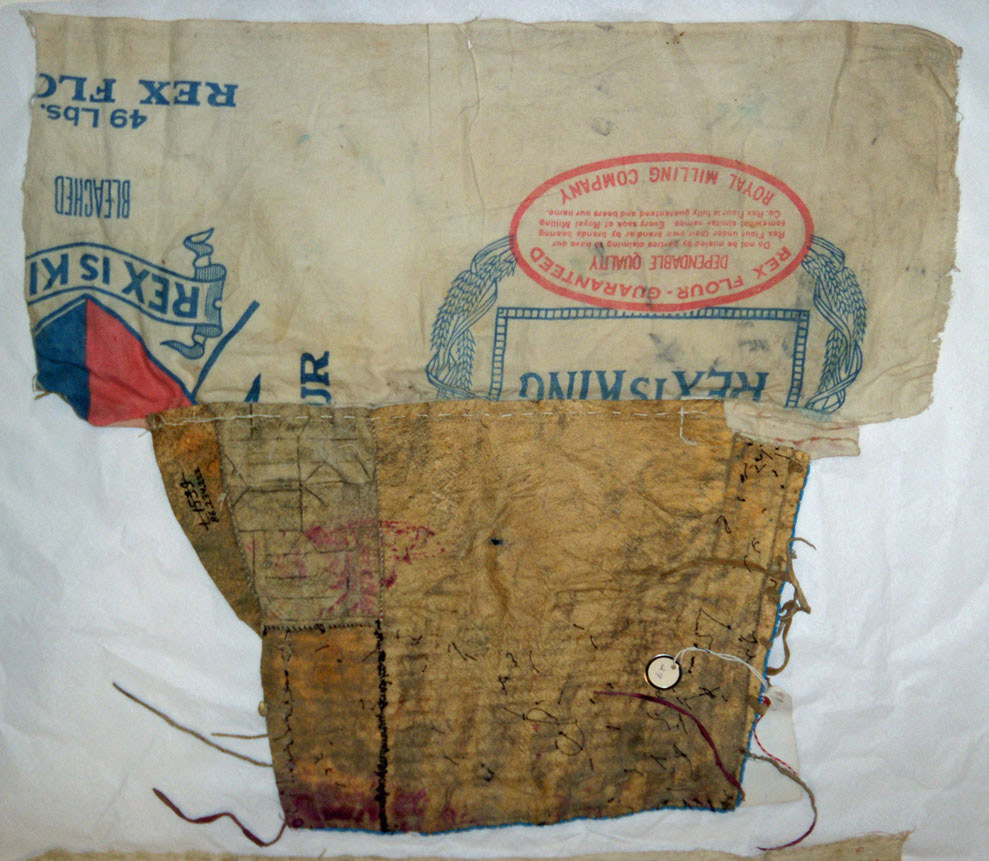The fur trade was both very good and very bad for American Indians who participated in the trade. The fur trade gave Indians steady and reliable access to manufactured goods, but the trade also forced them into dependency on European Americans and created an epidemic of alcoholism.
There is no doubt that knives with steel blades, iron cooking kettles, guns, hoes with metal blades, and other manufactured goods made life a lot easier for Indians. Though the trade items saved time for Indian women, much of that time was now given to cleaning and stretching beaver pelts or bison hides. There was a shift in the household economies of Indian families that, at first, seemed to produce greater security and efficiency.
American Indians often re-made trade goods into something they found useful. (See Image 2.) For instance, manufactured pipe stems made of bone were intended to be used with corncob pipes. However, the Poncas used the pipe stems as beads. The style spread to the tribes of the northern Great Plains and they became very popular for use in elaborately decorated breastplates. The pipe stems came to be known as hair-pipe beads. (See Image 3.)
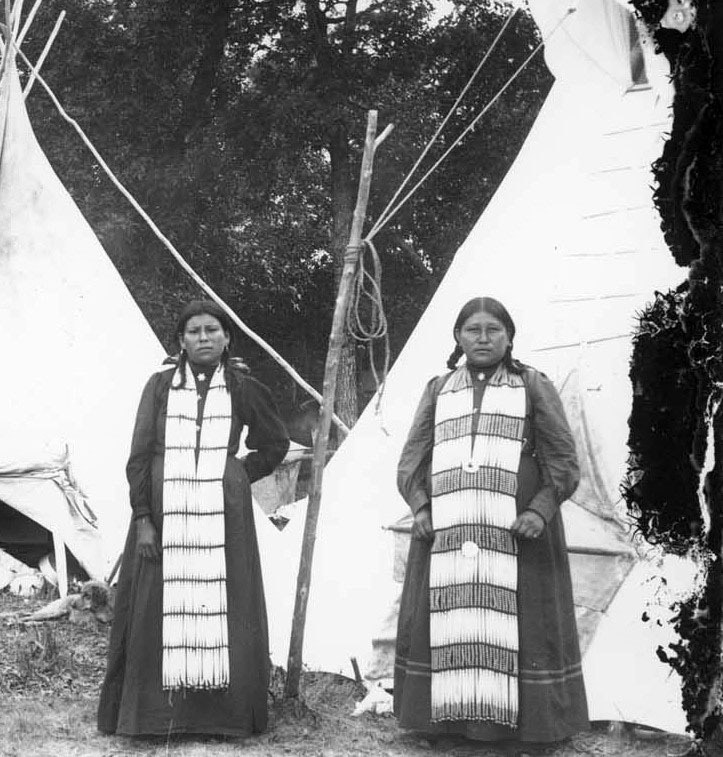
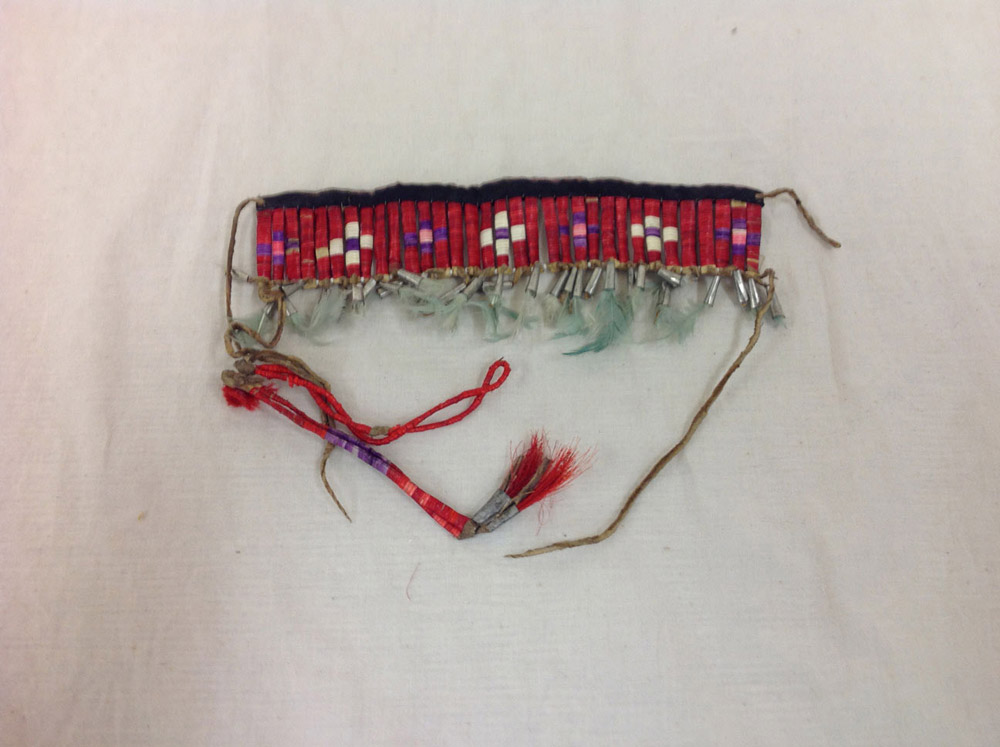
Colorful glass beads were a common item in the fur trade. Indian women used beads to achieve a high level of artistic expression. Beautiful designs stitched in colored beads graced their clothing, their moccasins, and ceremonial goods such as pipe stems, blankets, and saddle bags. (See Image 4.) Women still decorated objects with porcupine quills, now colored with dyes they received in trade, but increasingly more items were decorated with intricate beadwork designs. Though traders might have thought that glass beads were a cheap item to exchange for beaver pelts, women applied their special design skills in beadwork. (See Image 5.) Some women were able to trade their beading skills with other members of their tribe for food, horses, or other things they needed.
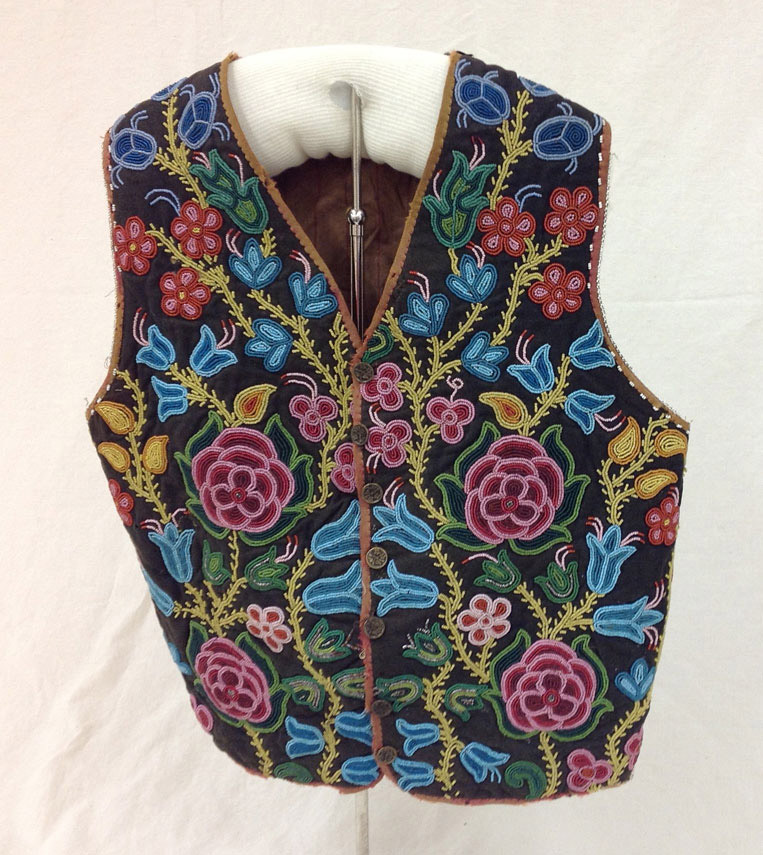
Indian women were important agents in the fur trade. Men usually trapped beavers, but women scraped the flesh off the fresh hide, stretched it, and properly prepared the pelts for trade. They often made the decisions about which company they would trade with. They also demanded the best rate of exchange. They sometimes lost control of the trade when a trader, such as Alexander Henry, forced the trade to go in his direction. During one visit to the Mandan villages, Henry fought with the women who owed their furs to the XY Company in payment for their debts. Henry finally won, but he had to force the women to give up the furs. The women then had to acquire more furs (and work harder) to pay their debt to the XY traders.
Some Indian women chose to marry European American traders in the fashion of the country.The term marriage “in the fashion of the country” originated among the French speaking traders of Canada. The French term is “a la faḉon du pays.” The Native American women who married European American traders were often called “country wives.” Many of traders who married native women also had wives “back home.” Sometimes, when men retired from the fur trade, they returned to their legitimate (legally married) wives in the states. This means that these marriages were not recognized by law or religion. While many marriages brought loving couples together for the rest of their lives, other marriages were very short-lived or violent. The children of mixed marriages in the Red River region formed a new culture called Métis. The mixed-blood children of marriages in other tribes usually grew up with their mother’s people.
Traders, especially those working for the North West Company, often used liquor to persuade Indians to trade. Sometimes, liquor was used to cheat Indians out of their furs. Liquor diminished the capacity of American Indians to make good business decisions. Indians and trappers who drank too much got into fights; sometimes the violence led to murder. Though U.S. law (and the Hudson’s Bay Company) prohibited the transport of intoxicating liquorsAlexander Henry the Younger established a trading post for the North West Company at Pembina in 1800. He very quickly recognized the problems that liquor caused in Indian communities. And he knew that the source of the liquor was the trading companies. He regretted the social and physical damage caused by liquor, but did nothing to stop the distribution of liquor in the fur trade. In February, 1803 he wrote: The Indians totally neglected their ancient customs; and to what can this degeneration be ascribed but to their intercourse with [fur traders], particularly as the [Chippewas] are so unfortunate as to have a continual succession of opposition parties to teach them roguery, and to destroy both mind and body with that pernicious article rum? What a different set of people they would be were there not a drop of liquor in the country. If a murder is committed among the [Chippewas], it is due to a drinking match. You may truly say that liquor is the root of all evil in the West. into Indian country, it was difficult to enforce this law. If an Army officer found liquor on a fur trade boat, he would destroy all of the kegs, but there were not enough officers to patrol river traffic.
Many relationships between traders and their Indian partners were friendly and respectful. Indian tribes and fur companies enjoyed mutual benefits from the fur trade. Indians obtained manufactured goods such as guns, knives, cloth, and beads that made their lives easier. The traders got furs, food, and a way of life many of them enjoyed.
However, competition among the tribes and among the fur companies created more conflict than peace. In addition, the fur trade led to the destruction of individuals and tribes even after the fur business ended. Fur traders gathered information about Indian country that drew farmers, miners, and railroads to the northern Plains. The people who followed the fur traders did not want Indians as trading partners. They were interested in taking land from Indians. The Indians’ ability to resist the newcomers was diminished by alcohol, disease, and dependency on trade goods.
Why is this important? The fur trade was a business that made profits for the owners and many of the traders. But it was also a cultural meeting ground where all of the participants were on equal footing. Everyone had something of value to trade.
However, in the long run, the fur trade was also very destructive for the American Indian tribes of this region. Many people forgot traditional skills for making things such as knives or hoes that they could now purchase with furs. Traders brought deadly diseases to Indian communities. Violent conflict often broke out between tribes that participated in the fur trade. There was some good in the fur trade, but more often, the effects of the fur trade were not good for American Indians.



